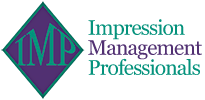Step 1: Uncover Faulty Logic
A first step in learning to use Outcome Thinking® is to develop awareness of your thinking. This begins with noticing when your thinking is dominated by assumptions, negative judgments or conflicted beliefs or opinions vs. the simple facts.
Once you stand back and observe these facts, then notice any judgments or assumptions that arise as you consider the facts. It’s like becoming an investigator of your own thinking and trying to “uncover” all the flaws in your thinking so that you can allow new possibilities to arise that exist outside your current perspective.
Recognizing your own thinking and understanding the basis of your faulty logic is a necessary step in being able to consciously choose to shift from defensive to offensive thinking, and fully engage the executive reasoning function of the brain. This process, however, can be challenging, and so to help you learn this skill, it is best to clearly write out what is fact, opinion, assumption and inference so your thoughts literally jump out at you.
Step 2: Shift the Brain to Offensive Mode
The next step is to actually shift your brain. Sometimes awareness is easy and the shift happens automatically by simply looking at the facts, but other times, the brain gets stuck, digs in, and perception narrows. For example, it could happen in the middle of a conversation with someone you already have negative beliefs about, or, when you are heavily invested in being right, or, if you are emotionally charged and reacting with anger, blame, judgment or withdrawal.
In these moments, we need awareness and specific actions we can take that will begin shifting the brain to an offensive position. One tool is to ask ourselves this simple question: How can I add value to this conversation/situation? Another tool is to: Think and speak positively from the other person’s perspective. So combining these tools you would think only in positive terms about the other person’s needs and perceptions, and what you could do that would add value.
As an example ask yourself how you can think and speak positively from someone else’s perspective if you are aware that that there is still a judgment about that persons behavior even though you’ve seen the facts. Asking this question sets the brain up to begin thinking in terms of what the other person’s perspective might be. This process of thinking about someone else’s world, their perspective and needs, feelings and challenges can only happen from the Frontal Cortex.
Once you’ve asked yourself this question and shifted the brain, it becomes easy to begin thinking thoughts such as, “Perhaps Jim is not aware of the extra work everyone is doing.” “Maybe things are going on in his personal life that is making it tough on him”. “He wants to do a good job and be part of the team.” “Maybe he is looking for ways to be more effective.” From this open, more balanced perspective, you’ll realize that your first contact with him should be an open one that gathers more information rather than one that blasts him with your opinion. Once the brain has shifted, our actions automatically become more effective and rational, and problem solving moves to a higher level.
With Outcome Thinking® you create a superhighway between your executive reasoning and your emotional center so you stay calm, centered and poised even in high stress situations. This allows you to process information clearly and quickly. Outcome Thinking® also allows you to stay positively focused and in alignment with others’ needs and perspectives instead of lapsing into negative assumptions, and reacting from a limited and narrow point of view.
So let’s move to putting these new skills into Action for you!
Step 1: Uncover Faulty Logic
Think of a situation you are currently facing where you’re aware of being unsettled, conflicted, or having negative feelings (or a situation you faced in the past that didn’t go as well as you would have liked) and observe your current thoughts and feelings.
Create a box with four columns across and four rows down. Title the column with FACTS, Assumptions, Opinions, Inferences. Now complete this exercise by listing just the facts of the situation. As you’re working on the facts, you may notice assumptions, opinions or inferences in your thinking. As they show up, simply put them in the appropriate box.
As you reflect on this process, what stands out for you? What did you notice about your own perspective? Did it change after completing this step?
Step 2: Shift the Brain to Offensive Mode
Begin Step 2 by thinking about the other person(s) in your situation. Focus your attention on them and then ask yourself: “How can I add value?” As you reflect on this question, keep your perspective on the other person(s) considering how they might be feeling and thinking from a positive perspective. Write down your thoughts about their possible perspective.
What did you notice as you began thinking positively from the other person’s perspective? Did anything shift in your own perspective as you considered their perspective? How does this experience relate to your new learning about the brain?
It is the diversity in our perspectives and experiences that provide the greatest opportunities for innovation, full employee engagement and innovative business results. With Outcome Thinking®, you have the tools to leverage all the differences within your organization while keeping defensiveness to a minimum thus creating new communication pathways toward new outcomes for the business. It is your IQ that often gets you the job, but it is the way you communicate with others that creates inclusion, engagement and the opportunity to leverage all the talent available to find the most innovative solutions possible.
About Anne Warfield
As the leading Outcome Strategist, Anne Warfield shows people how to say the right thing at the right time every time. The revolutionary Outcome Focus® Approach shows how to build a candid corporate culture of communication that allows you to lead, present and negotiate transformationally rather than transactionally. When applying Outcome Thinking® our client’s results include sales cycles reducing by 75%, turnover reducing by 30%, silos evaporating, and a 25% savings of time by executives. Find out how you can maximize your corporate culture for greater productivity and results! Contact us at 888-imp-9421, visit www.impressionmanagement.com, or email contact@imp.us.com.



